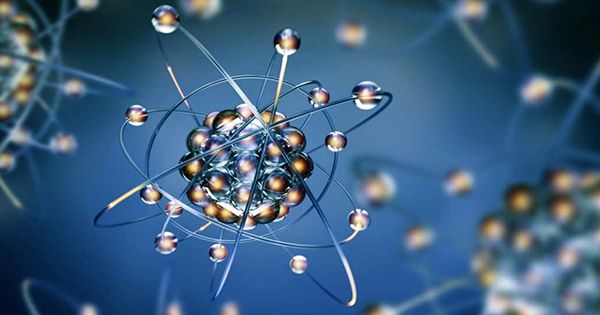Quantum mechanics may seem to be completely removed from our daily lives but its features we use in a large number of devices. Even its most exotic phenomenon may soon become part of known technology. This could be the case in a new study that found Quantum in a hot and messy system of 15 trillion atoms, 100 times more than the previous record.
Researchers believe that this type of involvement can be used to detect extremely weak magnetic signals in the brain and to improve scans of what is happening inside our heads. The breakthrough has been published in Nature Communication.
Involved physical phenomena that occur when you divide the same space evenly into pairs or groups of particles which means you cannot separate them independently but must take them as a single quantum state. Quantum entanglement is a unique quantum phenomenon that has no comparable analogy in classical physics. Even if they are far apart, you have to consider them as a whole rather than individual elements and the most interesting thing is that measuring one will affect the other Instantly, Even if they are on the other side of the universe.
They focused on steamed rubidium heated at 177 degrees centigrade (350 degrees Fahrenheit) where the atoms were not completely isolated but were barking at each other. Despite the chaos, the researchers found a large number of split atoms – about one-third of all gas atoms, about 100 times more than previously seen. They also found that the confusion was “non-local”, meaning between the two atoms involved; there were a few thousand more, in the heated tension of an entangled state.
Entanglement has proven to be accurate again and time-tested, but it is a fragile condition so researchers must take good care to create a system of a few atoms at very low temperatures close to the proper zero, so as not to disturb it. But if you also want to see some of the features of engagement like the researchers here, then of course you can be more creative.
Although it was not the most surprising element, the mesh will break in a fraction of a second but new tangles will form.
Lead author Jia Kong, from ICFO, Barcelona, explained in a statement, “If we stop measuring, the entanglement stays within about 1 millisecond, which means a new batch of 15 trillion atoms is involved a thousand times a second.” “And you must think that 1 millisecond is too long for atoms, long enough for about 50 random collisions. This clearly shows that the entanglement is not destroyed by these fraudulent events. This is probably the most surprising result of the work. “
The ultra-cool setup for most quantum entanglement tests is not ideal for bio-oriented sensors, but some like it may end up in new applications in basic brain science and neurosurgery. Atoms can act like little magnets and increase this “sensing” ability when wrapped. A quantum interlocking system can be used to detect faded magnetic fields as produced in the brain.
Senior author Professor Morgan Mitchell said, “This result is surprising, a real departure from everyone’s expectations of deception.” “We hope that this kind of giant involvement will show better sensor performance in applications ranging from brain imaging to self-driving cars to dark matter detection.”















